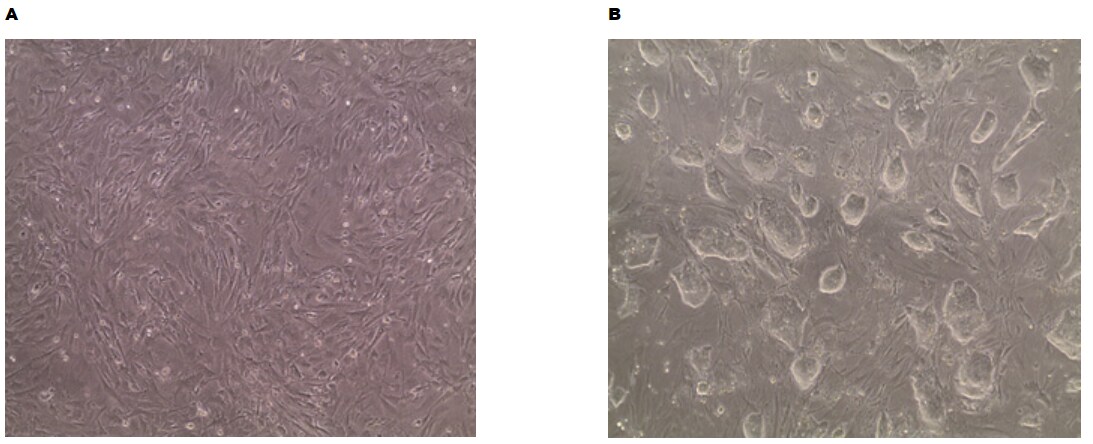Mouse Embryonic Fibroblasts (MEF Feeder Cells)
Many embryonic stem (ES) cell culture protocols rely on the use of a monolayer of primary mouse embryonic fibroblasts (MEF feeder cells). MEF cells perform two important roles in stem cell culture: they secrete several important growth factors into the medium, which help maintain pluripotency, and they provide a cellular matrix for ES cells to grow. The EmbryoMax™ range of PMEF mouse feeder cells provides researchers with a convenient solution for ES cell culture by eliminating the need for time consuming feeder cell isolation and preparation. Derived from day 13 mouse embryos, these cells are frozen into individual vials, containing approximately 5-6 x 106 fibroblasts per vial, and are sold as a pack of 5 vials per kit at various passage number (P1-P3). Several varieties are available, including drug resistant, growth arrested, and not mitomycin-C treated mouse feeder cells.
EmbryoMax PMEFs have been cited in over 500 Publications
PMEF-CF1:
MEF cells isolated from CF-1 mouse embryos at day 13. Most commonly used MEF feeder cell line used to support mouse and human embryonic stem cells (ES Cells) in culture.
PMEF-N:
Neomycin resistant MEF cells isolated from FVB mouse embryos at day 13. Commonly used in genetic selection experiments using neomycin as selection agent.
PMEF-H:
Hygromycin resistant MEF cells isolated from C57BL/6 mouse embryos at day 13.
PMEF-DR4:
DR4 MEF feeder cells are resistant to neomycin, hygromycin, puromycin, and 6-thioguanine.

Figure 1.A) PMEF-CF-C Mouse Embryonic Fibroblasts (MEFs) seeded at a density of 5X10^4 cell/cm2 onto 0.1% gelatin coated plates in FBS containing MEF media 24hrs after seeding. B) CMTI-1 mouse ES cells grown on MEFs in mouse ES cell media maintain correct pluripotent morphology (clumped colonies with clear/bright borders).
Ordering Information |
|---|
계속 읽으시려면 로그인하거나 계정을 생성하세요.
계정이 없으십니까?